
What's the problem?
The idea of collecting plastic bottle caps for charity isn't new in Ukraine. Social media has been flooded for years with posts about collection points and calls to participate. Yet, despite widespread visibility, many still don't fully grasp why bottle caps are being collected, what happens after they're donated, or their impact.
What's the solution?
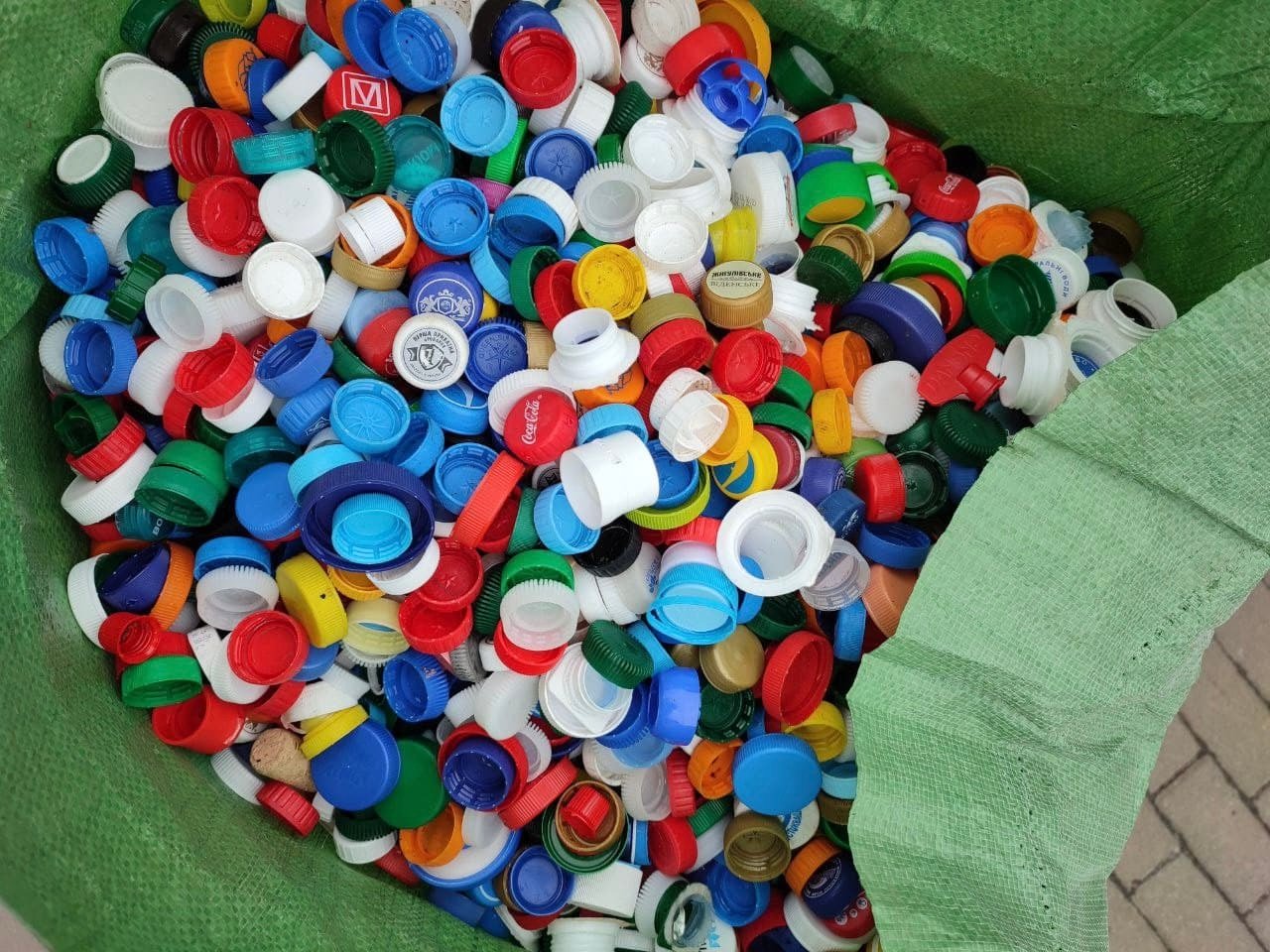
Collected plastic caps. Photo: Rada Environmental Enterprise
We turned to the experts behind Ukraine's largest cap collection campaigns to uncover the whole story. Olena Bratslavska, manager of the Rada Environmental Enterprise, and Tetiana Rudenko, leader of the OWES charity organization, explained what types of caps to collect, how many it takes to make a real difference, and how collecting bottle caps can benefit the environment and people.
How does it work?
Plastic bottle caps aren't just waste — they're a resource
Sorting out your bottle caps is an easy, eco-conscious habit with a real, practical impact. Instead of ending up in landfills, these caps are recycled and sold, and the funds raised go directly toward helping people in need — whether it's supporting Ukraine's soldiers or children battling serious illnesses.
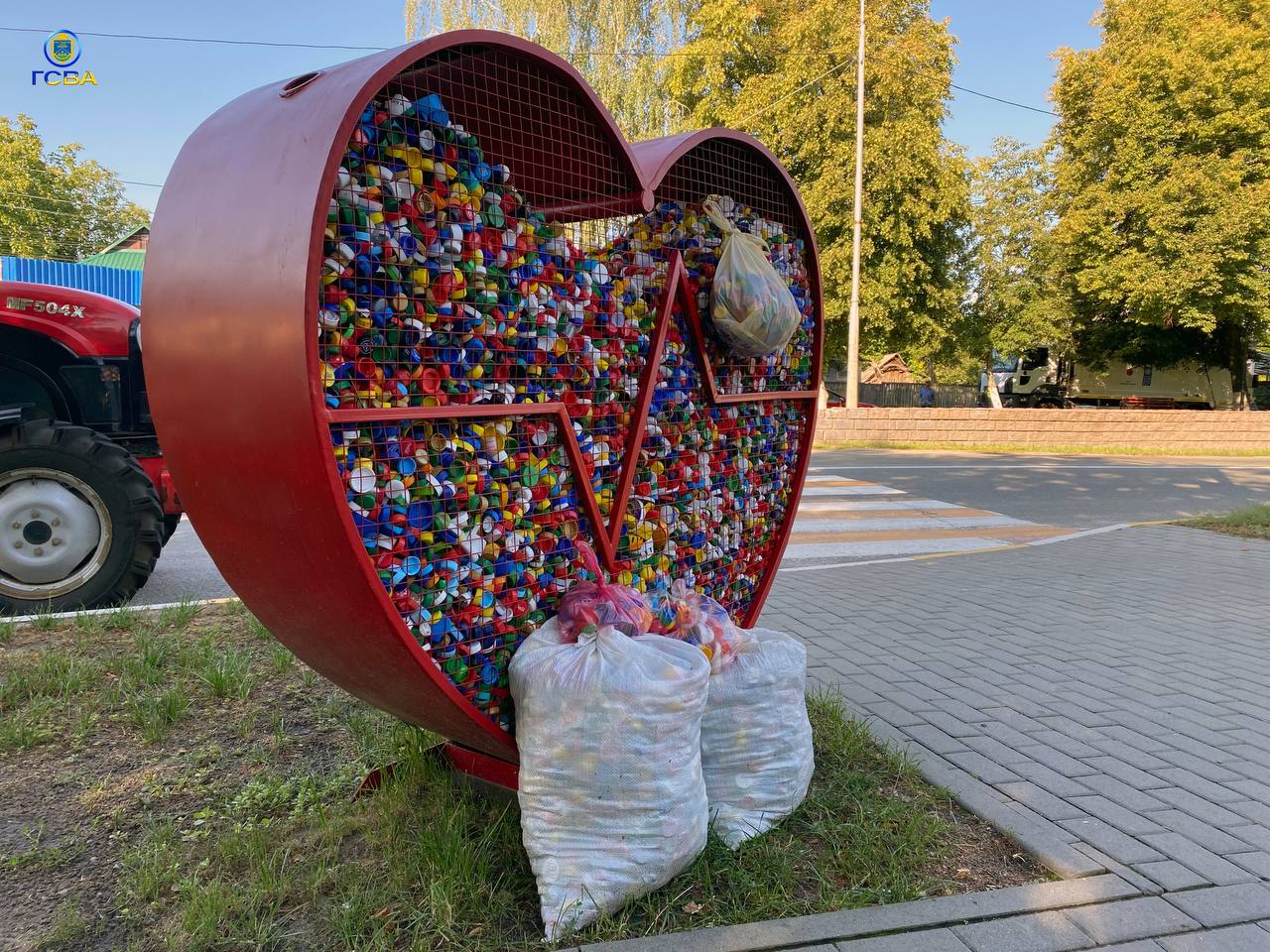
Heart for collecting plastic caps in Hostomel, Kyiv region. Photo: Rada Environmental Enterprise
The idea of collecting caps isn't exclusive to Ukraine. Many European countries, like Spain and Italy, have embraced similar initiatives, with people gathering bottle caps to raise funds for charity. This concept has taken root in Ukraine, with collection points now popping up everywhere — schools, apartment buildings, stores, banks, and even public spaces.
Take, for instance, the OWES (which, in Ukrainian, stands for Education, Upbringing, Ecology, and Sports). Activists of this charity organization have been collecting plastic bottle caps to support Ukrainian soldiers for nearly a decade. Their "Wings" project mobilized people across Ukraine to collect caps to fund drones for the front lines in response to the full-scale war.
Meanwhile, in Bucha, the environmental company Rada launched its own project — "EcoHeart: Collect Caps — Save Lives." Through this initiative, funds from recycling caps go directly to families with children fighting severe illnesses.
Why bottle caps?
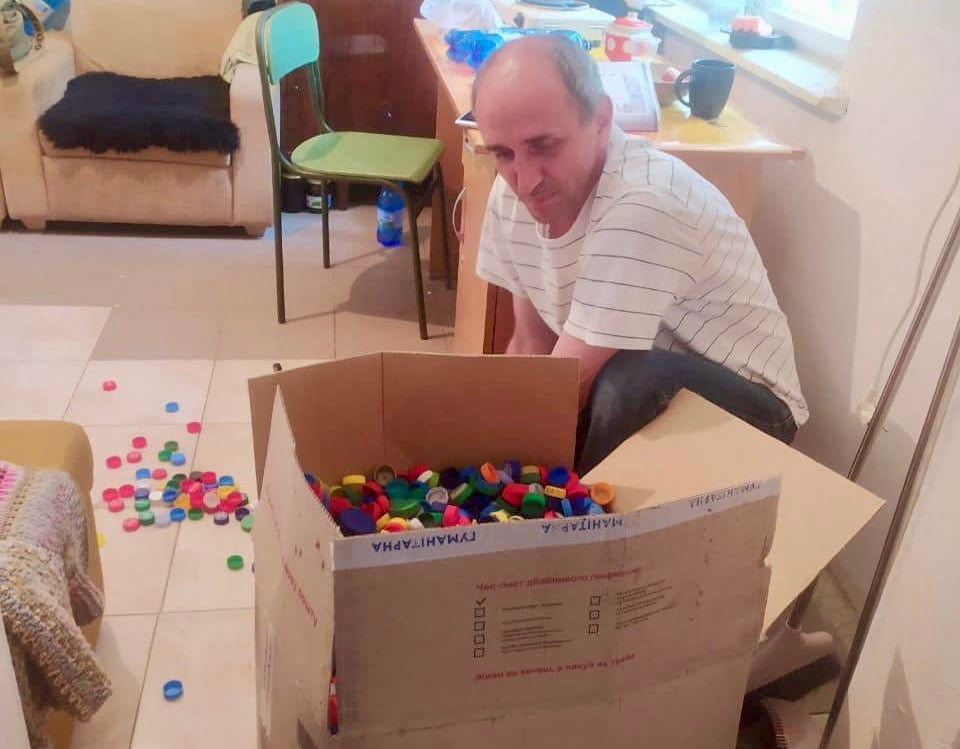
Collection of caps in the nonprofit WVU of Ukraine, Ternopil region. Photo: OWES
- Because it's simple, all it takes is a small box in your home to start collecting caps from water, juice, and other everyday products.
- It's a great way to engage kids. Bottle caps come in all shapes and sizes, making them the perfect tool for teaching children about recycling. It's a fun and colorful way for them to learn about environmental responsibility and the impact of plastic waste.
- It's good for the environment. Every cap collected is one less piece of plastic littering the streets or ending up in a landfill. Plus, all the caps collected are guaranteed to be recycled.
- Importantly, bottle caps are valuable. While plastic bottles only sell for ₴2-3 (5-7 cents) per kilogram, bottle caps can fetch as much as ₴10 to ₴14 (25-35 cents) per kilogram.
"There's a common misconception that all caps can be recycled, but that's not always the case," says Olena Bratslavska, coordinator of the "Collect Caps — Save Lives" project. "Different types of plastic caps can contain additives or different materials that complicate the recycling process, so it's crucial to sort carefully."
Which caps can you collect?
- Threaded caps from bottles of juice, water, soda, or beer
- Caps from milk, kefir, yogurt, and cream, as long as they don't have stickers
- Caps from Tetra Paks (dairy or juice cartons), but not the plastic piece that attaches to the carton
- Small caps from ketchup, mayonnaise, or sauce packets
- Water bottle caps and plastic handles from them
- Caps from baby food pouches and plastic baby spoons
- Certain types of pen caps that kids use in school (see the example below)
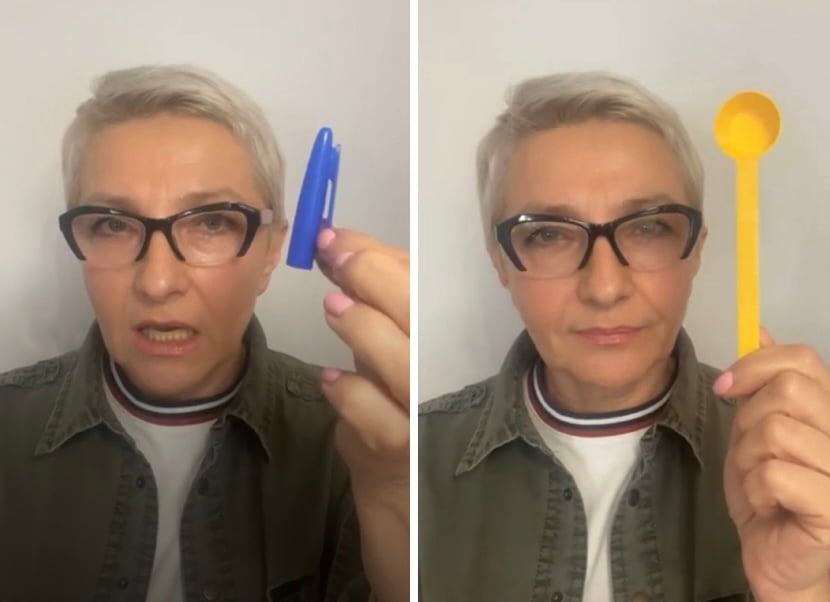
Tetiana Rudenko demonstrates a pen cap and a spoon from baby food, which are also suitable for recycling. Screengrab from the video with OWES
A quick tip: All caps and items need to be clean! Even though they'll be washed during recycling, dirty caps with food residue can create unpleasant odors, attract mold, and cause problems during collection.
What shouldn't you collect?
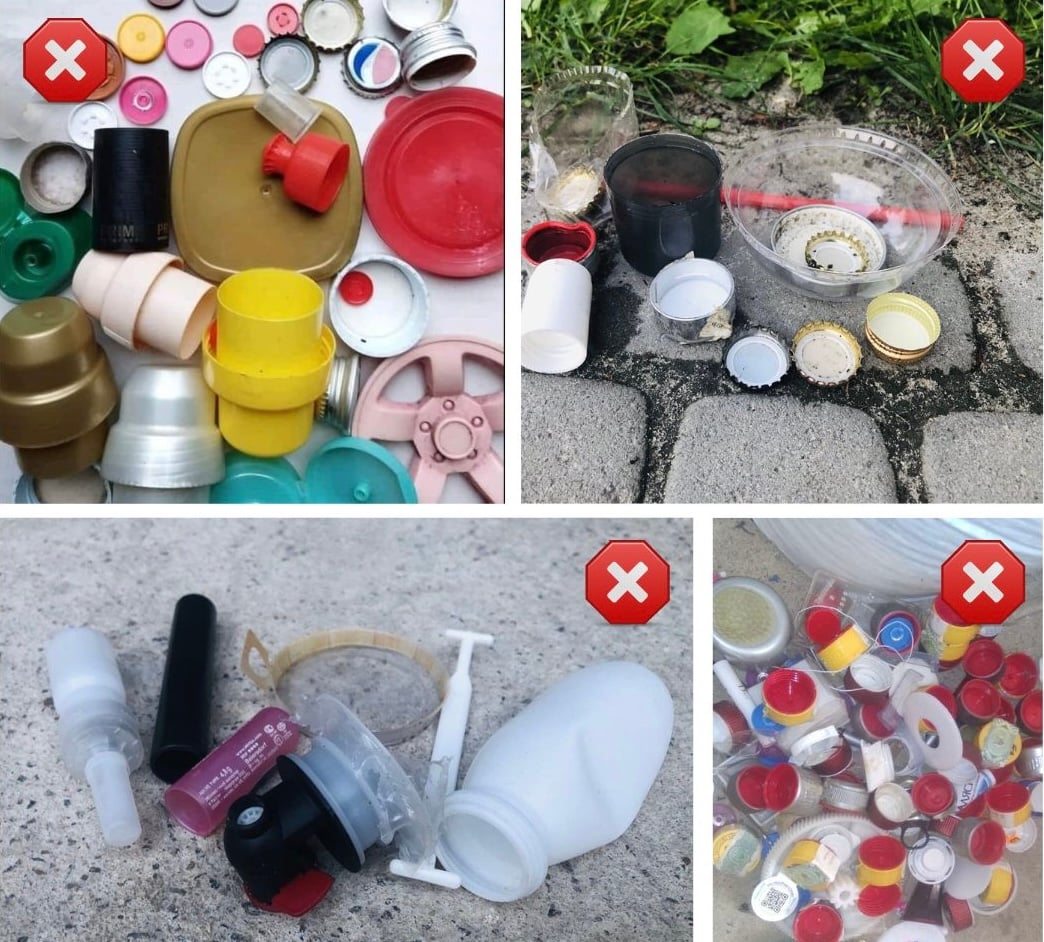
Such caps should not be brought to collection points. Photo: Rada
- Caps from medications, cosmetics, or chemical products are made from different, non-recyclable plastics.
- Flexible bread clips — though they look plastic, they often contain metal that can damage recycling equipment.
- Don't toss trash or non-recyclable items into the cap collection bins!
Where to bring your collected caps?
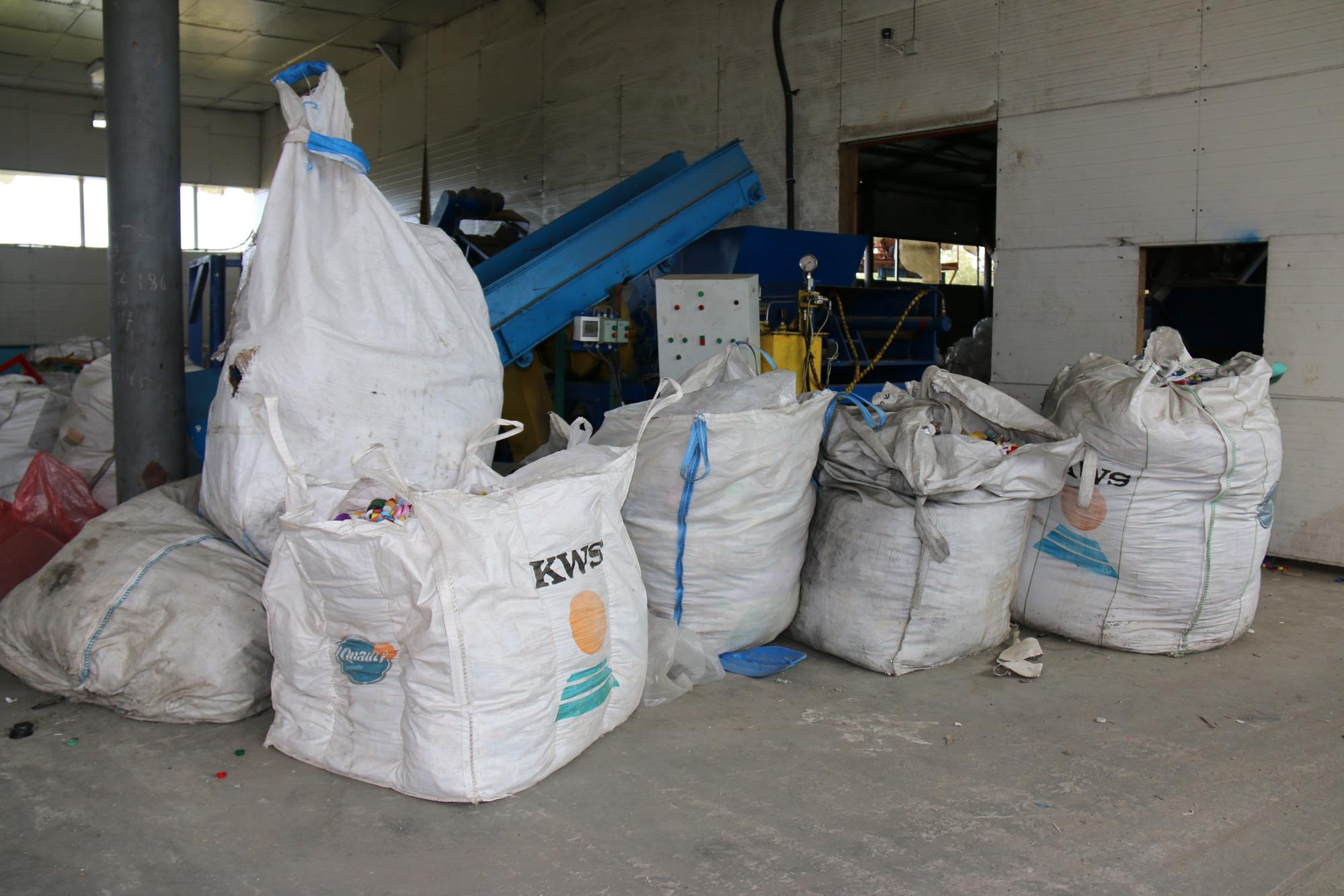
At the Rada eco-company's sorting facility, bags of caps wait to be sent to recycling plants. Photo: Rada
Cap collection campaigns help fund vital charity projects. For example, Rada collects caps to support sick children. If you live in Ukraine, you can drop off your caps at:
- EcoHeart bins in towns across the Kyiv region, including Bucha, Irpin, Vorzel, Nemishaieve, Borodianka, and Klavdiievo-Tarasove
- Recycling centers and mobile collection points at city halls, coworking spaces, educational centers, cafes, and more. The list is here.
- Or, bring them directly to Rada's sorting facility in Bucha. Once a large batch (700 kg to 1 ton) is collected, it's sent for recycling.

Caps for drones, collected by one of the Ukrainian libraries. Photo: OWES
The OWES charity organization also runs a campaign to collect caps to fund FPV drones for Ukrainian soldiers. If you'd like to get involved, here's where you can contribute:
- Epicenter K stores in Kyiv — look for the big pink barrels labeled "Voroham Kryshka!" (which means "Capping the Enemy!")
- Markets and hypermarkets across the country that are participating in this national campaign
- PrivatBank branches in Kyiv, Lviv, and Dnipro
- Not sure where to go? Check the spreadsheet for your city or village, or message the OWES for more details.
- If you're gathering a big batch of caps (at least 20 kg or two bags of sugar), you can send them for free via Nova Poshta. Message the OWES page or Tetiana Rudenko on Facebook to get the address. Be sure to mark the package as "caps for drones."
- For those living abroad, you can still help! You should do it only if you can ship caps to Ukraine for free and they weigh under 50 kg. Otherwise, this type of recycled material must be declared at the customs. You can also donate the cost of a water bottle — the equivalent of 1 kg of caps in Ukraine!
Once collected, the caps are recycled into secondary plastic granules, which can be used to create pipes, containers, household goods, and other essential plastic products.
Can prosthetics be really made from bottle caps?
One of the most persistent myths surrounding cap collection is that prosthetics are made from plastic caps. This misconception continues to pop up, even among recyclers and organizations that promote the initiative.
The confusion started with some misinterpreted information campaigns. Back in 2015, when OWES leader Tetiana Rudenko adopted the idea from Europe, the concept was simple: residents would collect caps, and once a year, the funds raised from recycling them would be used to purchase wheelchairs for people with disabilities. In Ukraine, the campaign aimed to fund prosthetics for war veterans, but some media outlets shortened the message to "caps for prosthetics."
"I've heard some pretty wild stories — people thinking prosthetics are made from caps like you'd snap together Legos!" Tetiana laughs. "That's not how it works. Caps are made from HDPE (high-density polyethylene), which isn't suitable for prosthetics. Prosthetics are made from high-tech materials. We collected and sold the plastic, and the money accumulated at the charity account was sent to help soldiers needing prosthetics."
As time went on, the Ukrainian government began covering veterans' prosthetic needs. After the full-scale invasion, the foundation switched gears, collecting caps to fund something just as crucial — FPV drones for the front lines.
However, there's a grain of truth in the myth. In some cases, recycled plastic can be used to make the prosthesis socket — the part that attaches to the limb.
Does it really work?
Olena Bratslavska, the coordinator of the "Collect Caps — Save Lives" project, proudly shares how the caps collected by residents of the Kyiv region have helped 11 children.
"This eco-friendly charity is our effort to protect the environment and help kids heal. And it's something anyone can do. It's easy and interesting — all you need to do is sort your waste and collect plastic caps. We pass them on for recycling, and the money raised goes to charity to support seriously ill children," Olena explains.
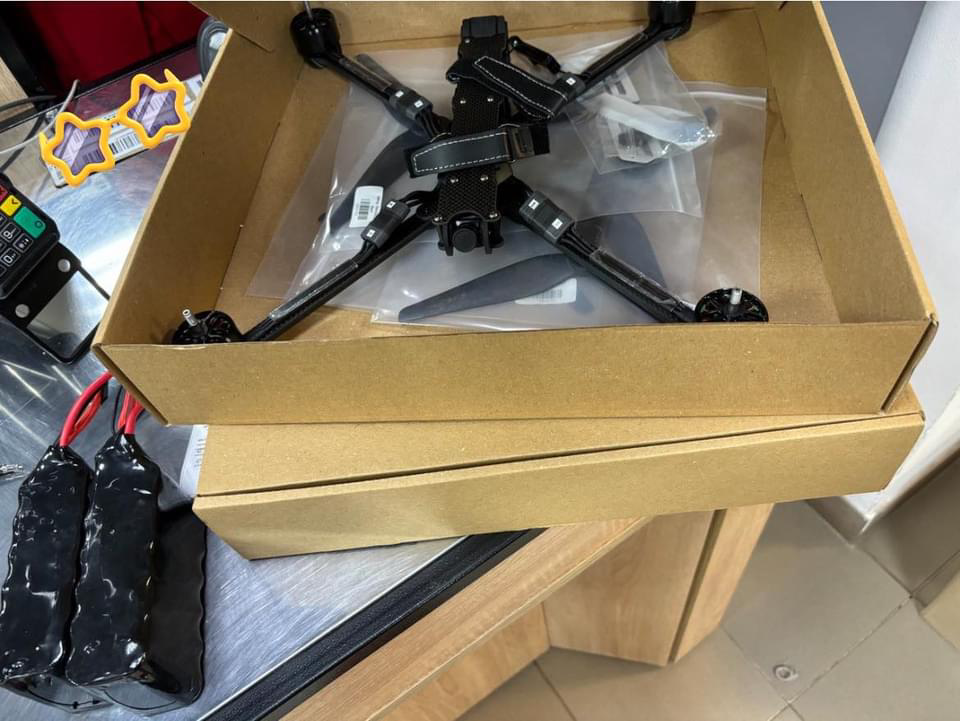
One hundred five such drones went to the front line to defend Ukraine. Photo: OWES
Caps collected through the "Capping the Enemy" campaign have also funded 105 drones that are now defending Ukraine. Over the past year, 135,299 kg of caps have been collected, raising ₴1,842,460 ($44,632), and these numbers keep climbing. On average, about 1,500 kilograms of caps are needed to fund a single drone.
Tetiana Rudenko is grateful to everyone who's been part of this incredible effort. She shares the story of Timur Nepokrytov, a 5-year-old boy from Dnipro, who single-handedly organized a cap collection at his kindergarten. Now, the entire school, parents, and teachers are involved.
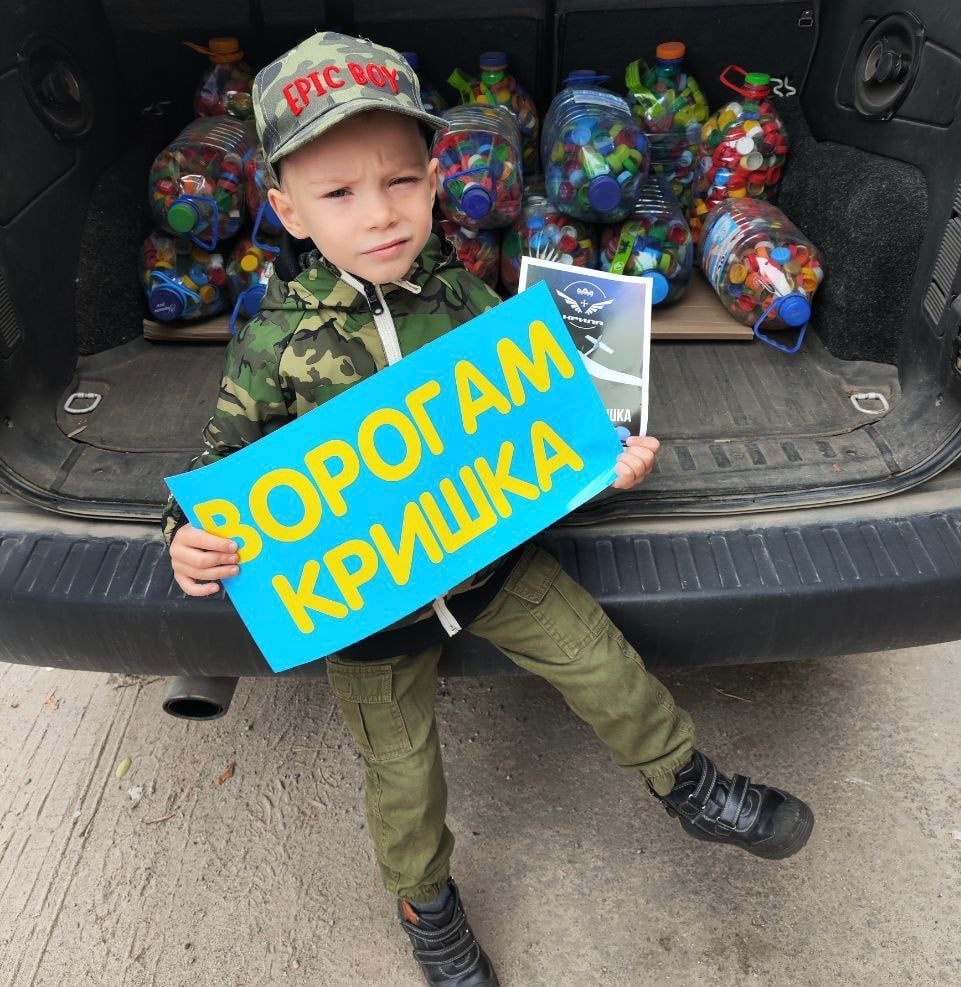
Timur organized the collection independently and collected 20 large bottles of caps (behind him). Photo: OWES
Even more helpful solutions!
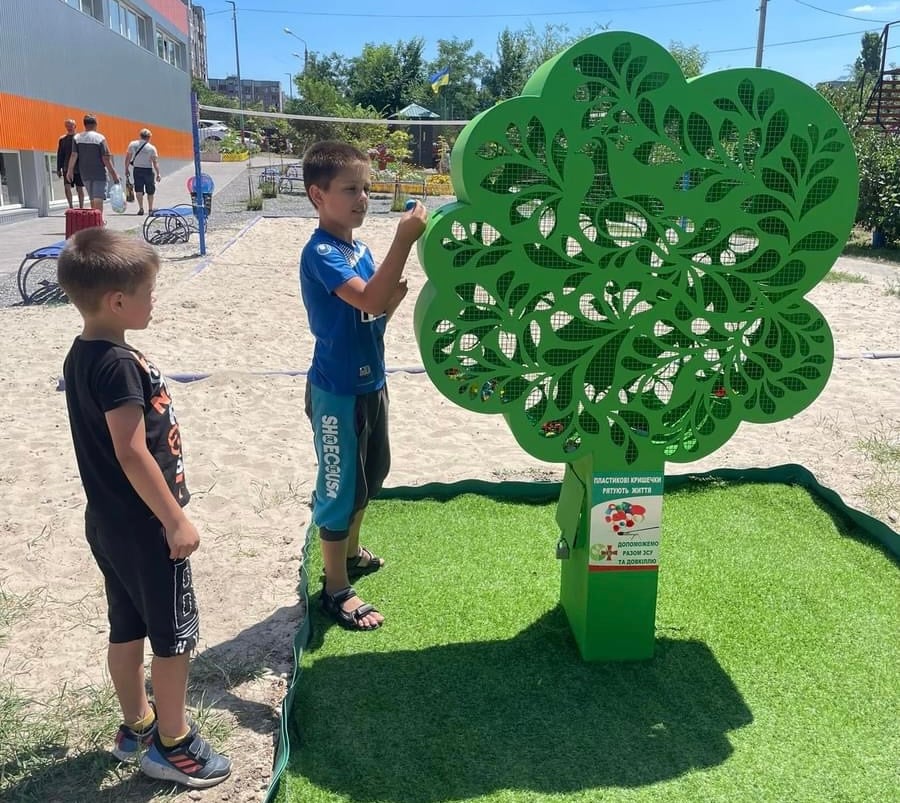
Eco-tree for collecting plastic caps in the city of Kryvyi Rih. Photo: Svitlana Khvatova
OWES leader Tetiana Rudenko suggests starting small if you've been thinking about doing something for the environment but don't know where to start. Place a cap collection container in a public spot — maybe in your building entrance or at a local shop — and add a flyer explaining what the caps will support. Check it regularly, and turn in the caps for recycling when it's full.
"Plastic caps are a resource," Tetiana explains. "In Sweden, they live off their waste. We're not asking people to dig through trash to find caps. When we first started collecting for prosthetics, and now for drones, people would write to us saying, 'That's crazy. We're not going to rummage through trash. Why isn't the state handling this?' My response is always the same — the state is us.
"Don't sit around your kitchen table complaining about how things are bad. If you buy water, milk, or yogurt, you have a choice—throw the cap in the trash or set it aside to send it to people who will use it as a resource to help someone."
Tetiana believes that every cap collector is building a habit to benefit Ukraine and the planet in the long run: "Collect these caps, bottles, waste paper, batteries, hand them in, exchange them for money. To buy light bulbs for your building, plant flower beds, or install solar panels on your home. Turn something you don't need into something valuable without ever needing to dig through trash. And our Earth will breathe a little easier."







